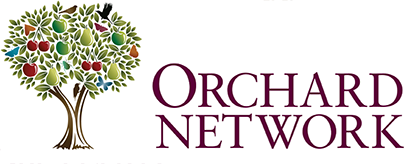Pre-application research
proactive arguments to encourage alterations in development proposals
For development sites where the traditional orchard is only a small component of the site and could feasibly be incorporated into the development either intact or partially intact.
Describe the benefits of a traditional orchard as a public green space and habitat, and without making it sound like a threat (it could be one, but make it a virtue) make it clear that you, and others, would object on biodiversity grounds if the orchard wasn’t retained.
If the orchard area is only a small component of the proposed development site, preserving and incorporating it into the development application could be of great benefit to its overall quality.
Template text:
Ecological value
Traditional orchards are an important wildlife habitat for a variety of reasons, such as the presence of dead and decaying wood for invertebrates, the fruit and nectar used by a variety of species as food sources and the provision of habitat for mistletoe and fungi.
Priority habitats and species
Traditional orchards are a Habitat of Principal Importance in Section 41 of the Natural Environment and Rural Communities (NERC) Act 2006, and so their conservation is a statutory requirement for local authorities. The noble chafer beetle (Gnorimus nobilis), found living in the trees on this site, is a Species of Principal Importance, also under the NERC Act, and its rarity across the UK makes this traditional orchard very unusual.
Value of incorporating the orchard into the proposed development
There would be a significant amenity value and public health benefits in retaining the orchard for the new residents and neighbours of the new site and having mature trees as an aspect has a positive effect on house prices. As the trees are still fruiting, they may also be attractive to the new residents for picking. The Natural England report Microeconomic Evidence for the Benefits of Investment in the Environment 2 presents evidence that proximity to well-managed greenspace generally has a positive effect on house prices and retail value.
Visibility value to wider community
The orchard can be seen and enjoyed by members of the public from the nearby housing / places of work / roads / roads with bus routes / railway / public footpaths / cycle paths / bridleways [delete as appropriate]. Preserving the orchard within the new development would allow this public enjoyment to continue, generating a more favourable impression of the development with the general public.
Community use
[1] The orchard currently contains a public right of way and has been enjoyed by the local community for many years. Allowing this to continue would foster good community relations. [2] The local community have previously not been able to access the orchard. If it were to be incorporated into the proposed development, this would enable use and enjoyment of the orchard by the local community, a facet of the development which may appease local residents that are opposed to the development.
Presence of rare regional fruit varieties
This traditional orchard contains/may contain fruit varieties of regional importance, and by incorporating it into the plans would mean that the development protects this aspect of local heritage.
If incorporating the trees into the development is not deemed to be possible, at the very least the developer should take steps to propagate from the trees before felling. This would facilitate the replanting and preservation of these regional varieties either onsite or elsewhere. Local orchard groups can be contacted for advice on heritage varieties and grafting.
Other potential positives to consider if relevant: Better drainage, buffer between housing (noise and privacy), air quality improvements
Established trees are well known to slow rainwater run-off and reduce incidents of flash flooding.

